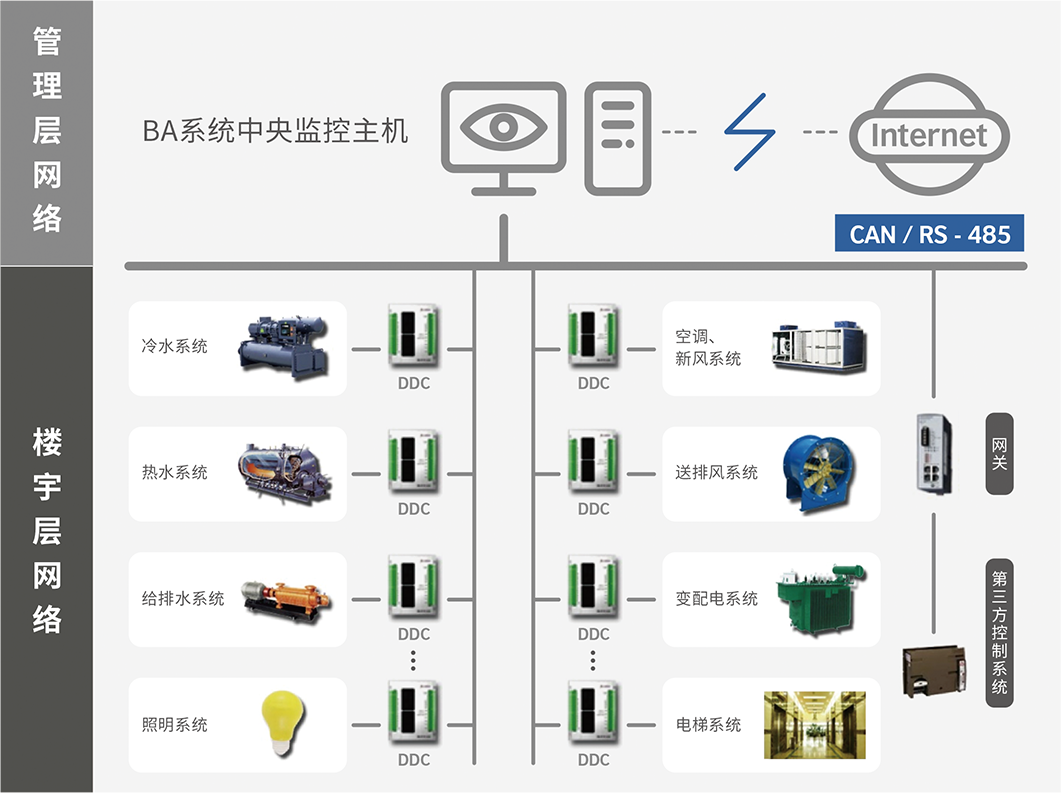The FPower Building Energy Management and Control System is a Distributed Control System (DCS) designed based on modern distributed control theory. It connects system controllers deployed at various monitoring locations through a network, forming an integrated automation platform that combines centralized operation, supervisory management, and decentralized control.
Public lighting systems
Ventilation fans
Water pumps
Air compressors
Fresh air units
Elevators
Commercial buildings
Educational facilities
Government offices
Industrial plants
The system automatically operates based on predefined programs, significantly reducing the need for manual intervention and saving labor costs.
All equipment operates under continuous system supervision. Detailed operation logs and condition monitoring help maintenance teams perform timely servicing, extending the useful life of equipment.
With long-term data collection and system diagnostics, the platform provides insights and recommendations for energy optimization, enabling more economical and efficient energy usage.

The central workstation system is the core of the BAS (Building Automation System). It consists of a PC host, color display monitor, and printer, and can be directly connected to the Ethernet.
EBS series Direct Digital Controllers (DDCs) serve as the primary control units for all building automation systems. They process control logic and communicate with both the management layer and field devices.
This includes all on-site electromechanical devices such as:
HVAC systems
Ventilation fans
Lighting systems
Elevators
Pumps and compressors
The FPower Building Automation System achieves the following functions through flexible hardware and software configuration:
Measure operational parameters of various electromechanical systems
Set control logic and automate start/stop of equipment
Improve operational efficiency of all connected devices
Monitor and display real-time equipment status; trigger alarms in case of faults
Ensure safe adjustment and coordination of field-level automatic control
Optimize energy usage based on process requirements
Implement centralized management strategies based on operational needs
Allow system-level intervention in equipment operation when necessary
Analyze real-time and historical operational data through logs and records
Provide computing and forecasting tools to optimize operation modes
Enable data exchange between BAS and other management systems
Support remote control of connected devices
Offer convenient tools for system diagnostics, configuration updates, and future expansion
Ensure data security via password protection and access control
Enable multi-level management authority according to user roles